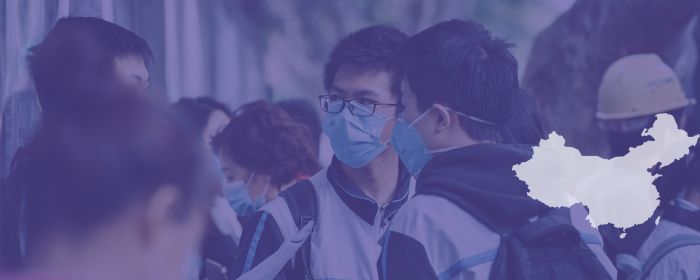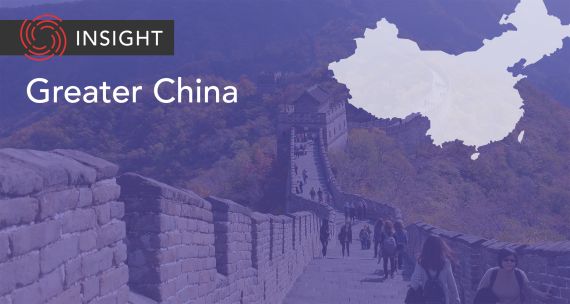The Takeaway
Following China’s rapid rollback of COVID-19 restrictions, outbreaks in popular centres are beginning to overload local health-care systems. The country’s hospitals and front-line medical workers – many of whom are reportedly overworking or working even after getting infected – are facing the biggest test in handling what could be the nation’s most significant outbreak since 2020.
In Brief
COVID-19 patients flooded hospitals across China over the past week, as largely unreported infections ripped through cities and towns following an abrupt dismantling of the zero-COVID pandemic control regime. Mounting frustrations in inundated hospitals began to show in early December 2022. Medical students, who are often pressured to stay and continue working at hospitals with minimum or no pay, launched protests that month, complaining about their dangerous working environments. In Chengdu, medical student Chen Jiahui collapsed after a hospital shift on December 13 and died the next day. Records show that he had tested positive for COVID-19 shortly before his death. The tragedy led to outrage as “netizens” criticized the exploitation of medical students and unsafe reopening measures.
To cope with medical staff shortages, the country’s health-care system is betting on already-strained doctors and nurses to work even more and treat as many patients as possible. Authorities in Henan province in central China are cancelling statutory holidays for all health-care workers until the end of March 2023 to combat rising cases of COVID-19 – an extraordinary measure that was last seen in the initial months of the pandemic in 2020. As of December 19, local public health officials in multiple Chinese cities have called on retired health-care workers to return to the front line of COVID-19 control, a move that was greenlit by China’s National Health Commission.
Implications
Current public health measures could cause especially severe outbreaks in smaller urban areas and rural regions with limited health care resources. In these areas, there are relatively higher percentages of children and the elderly, as well as people living with disabilities. An overwhelmed local public health system means delayed treatment for patients with other illnesses, which was a persistent problem during zero-COVID lockdowns. Shortages of medicine and self-testing kits are also widespread, adding further fuel to the fire. And in many parts of China, it remains common to visit hospitals for non-emergency medical needs due to the efficiency and quality of the treatment provided. Experts say that the government's messaging has been ineffective, as patients with minor symptoms continue to visit hospitals rather than recovering at home.
As of 2021, China had a national average of 3.04 doctors and 6.70 beds per 1,000 residents. The latest data from the National Health Commission show that China had 1,044,000 medical institutions by the end of November 2021 — 12,180 more compared to November 2020, or a 1.12 per cent year-over-year increase. The country is preparing to mobilize health resources across the board, such as opening up new fever clinics at community health centres, transferring doctors to intensive care from other departments, and adding thousands of ICU beds in makeshift hospitals. But why these measures were only taken in December 2022, notwithstanding the possibility of starting preparations earlier, is a puzzling question, especially given the central government’s opaque decision-making process.
As debates over citizens’ access to health-care resources are brought to the fore, COVID-19 also continues to highlight the difficult fight for transparency in China’s governance. Chen Jiahui’s death, to some, is reminiscent of whistleblower Dr. Li Wenliang’s death in early 2020. Like with Li’s death, authorities censored information surround Chen’s passing. 'Netizens’ also note that, similar to Li, Chen was resuscitated for at least 12 hours while showing “irreversible signs of fatality.” Despite the resuscitation effort, the lack of real accountability exacerbates popular anger, and tensions between regular citizens and the increasingly all-encompassing state will likely continue even after the end of zero-COVID.
What's Next
-
Statistical differences hide true toll of COVID-19
Chinese authorities are continuing to report extremely low daily case counts of COVID-19. Five patients were reported as having died of COVID-19 in Beijing on December 19 — some of China’s first official pandemic deaths in weeks — but staff at one of the city’s crematoriums told the Financial Times that they cremated at least 30 COVID-19 victims on December 14 alone. The State Council’s pandemic coordination bureau said on December 20 that only those who specifically die of respiratory failure caused by a COVID-19 infection will be considered COVID-19 deaths, excluding those with preexisting conditions and those who die of cardiovascular failure. Discrepancies between what the state considers COVID-19 deaths and widespread evidence of health-care strains could further misinformation and distrust.
-
China scrambles to bolster community-level care
China pledged to build an effective primary-care system during its most recent health-care reforms in 2016. However, the initial COVID-19 outbreak in Wuhan still exposed “woeful inadequacies” in, and widespread disdain for, community health centres over their inferior equipment and often unprepared staff. As Chinese cities race to open new fever clinics at the community level, their designed functions, namely to curb the spread of contagious diseases and alleviate strains on general hospitals, may be undermined without strong and clear messaging to patients.
-
A grim winter ahead
Modelling by The Economist, which builds upon work from Chinese researchers and government data, predicts that at the current rate of vaccination, 1.5 million people in China could die of COVID-19 in the next three months. Without an extraordinarily efficient vaccination drive or moves to control COVID-19's spread, prospects for vulnerable citizens are extremely bleak.
• Produced by CAST’s Greater China team: Maya Liu (Program Manager); Tristan Li (Analyst); and Irene Zhang (Analyst).




